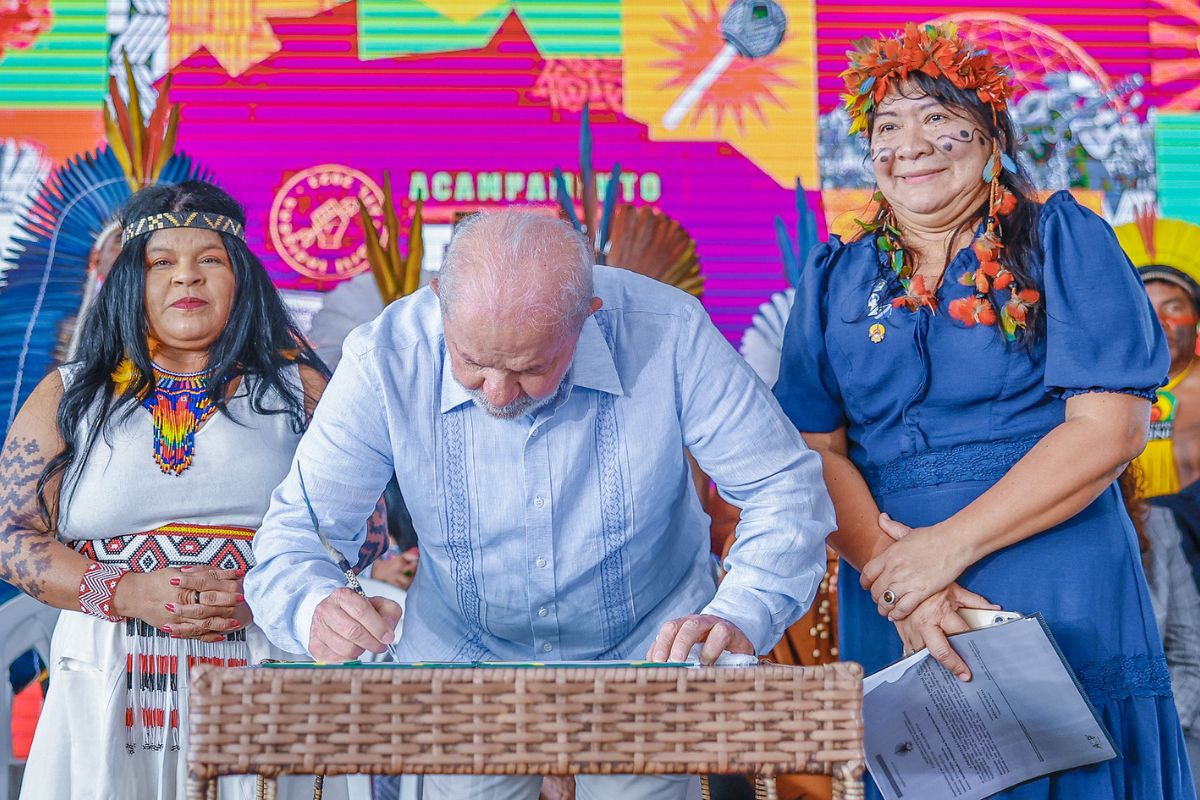On Wednesday afternoon, thousands of indigenous people representing more than 100 different communities marched through the streets of Brazil’s capital Brasília, in direction of the federal Congress building, where they held a vigil. Holding banners, wearing traditional dress, and chanting ancestral songs, they sought to raise awareness ahead of a landmark Supreme Court trial that could define the future of indigenous land rights in Brazil.
Activists also inflated an enormous balloon representing Earth, symbolizing that the way to put the brakes on the global climate emergency is to accelerate demarcations of indigenous territories.
On June 7, the Supreme Court will resume a case involving a piece of land in the southern state of Santa Catarina claimed by the indigenous Xokleng people — an originally nomadic tribe that was nearly wiped out after battling settlers in the past and rural producers in the present.
Whether they are granted the right to the land and the justification used in the final decision will serve as precedents for all future disputes on the matter.
On one side of the dispute, indigenous groups maintain that their right to land must be granted based on their ancestral connection to a particular area. Meanwhile, rural lobbies seek to establish a cut-off point for land claims. If their opinion prevails, any indigenous groups that cannot prove their occupation of a given piece of land on October 5, 1988 (the day the...


 Search
Search






































